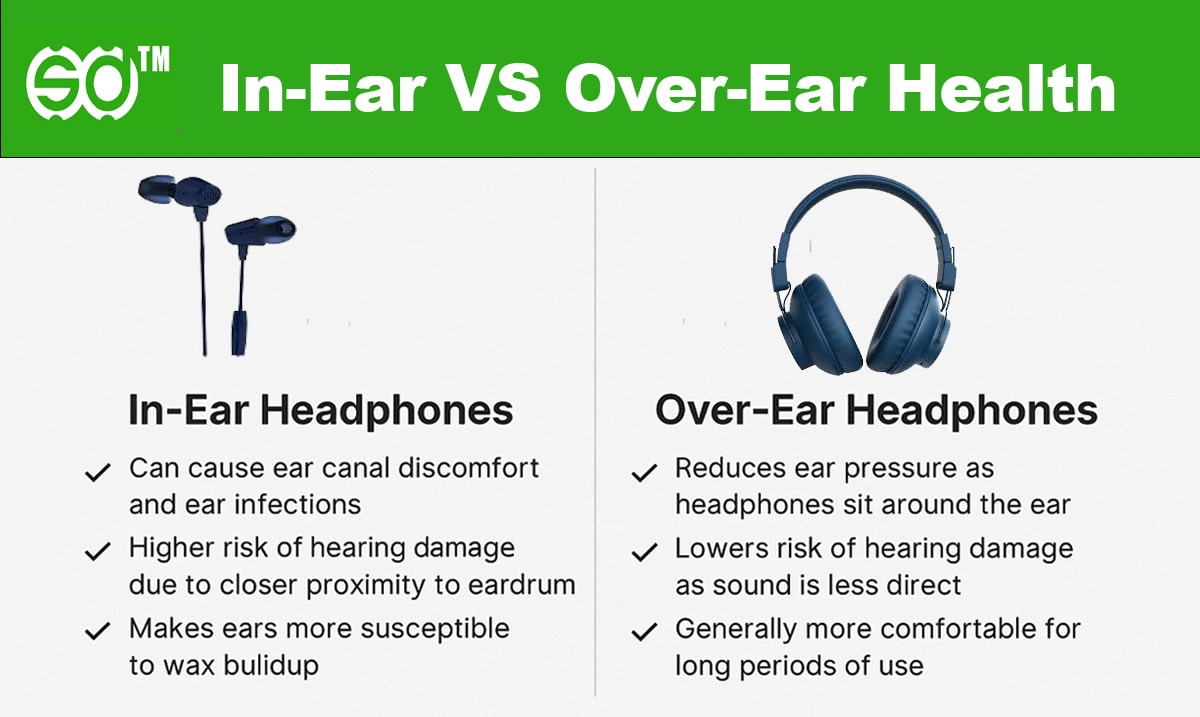In-Ear Headphones vs Over-Ear Health
In-ear and over-ear headphones represent two primary styles of personal audio gear, each designed for different use cases. In-ear headphones (earbuds) are compact and inserted directly into the ear canal, while over-ear headphones encompass the ears and offer immersive sound and physical comfort. Beyond audio performance and portability, it's crucial to understand how each affects our hearing health.
Health Considerations for In-Ear Headphones
In-ear headphones, also known as earbuds, fit directly into the ear canal. While they are compact and portable, they can pose specific health risks if used improperly:
- Increased risk of hearing damage due to proximity to the eardrum.
- Potential for ear canal irritation and wax buildup.
- Higher chance of infections if not cleaned regularly.
Health Considerations for Over-Ear Headphones
Over-ear headphones encase the entire ear, providing better isolation and potentially lower listening volumes. Health benefits include:
- Reduced pressure on the eardrum.
- Better ventilation around the ears, reducing moisture buildup.
- Lower risk of long-term hearing damage when used correctly.
Comparison Table: In-Ear vs Over-Ear Health Factors
| Factor | In-Ear Headphones | Over-Ear Headphones |
|---|---|---|
| Sound Pressure | Higher due to proximity | Lower, surrounds the ear |
| Ear Canal Health | May cause irritation/infection | Generally safer for ear canal |
| Comfort for Long Use | Less comfortable over time | More comfortable with padding |
| Risk of Wax Build-up | Higher | Lower |
| Ventilation | Poor ventilation | Better airflow around ears |
Conclusion
While in-ear headphones are convenient and portable, over-ear headphones are generally considered safer for extended listening and overall ear health. Regardless of your choice, proper hygiene and responsible listening volumes are essential for preserving long-term hearing health.










